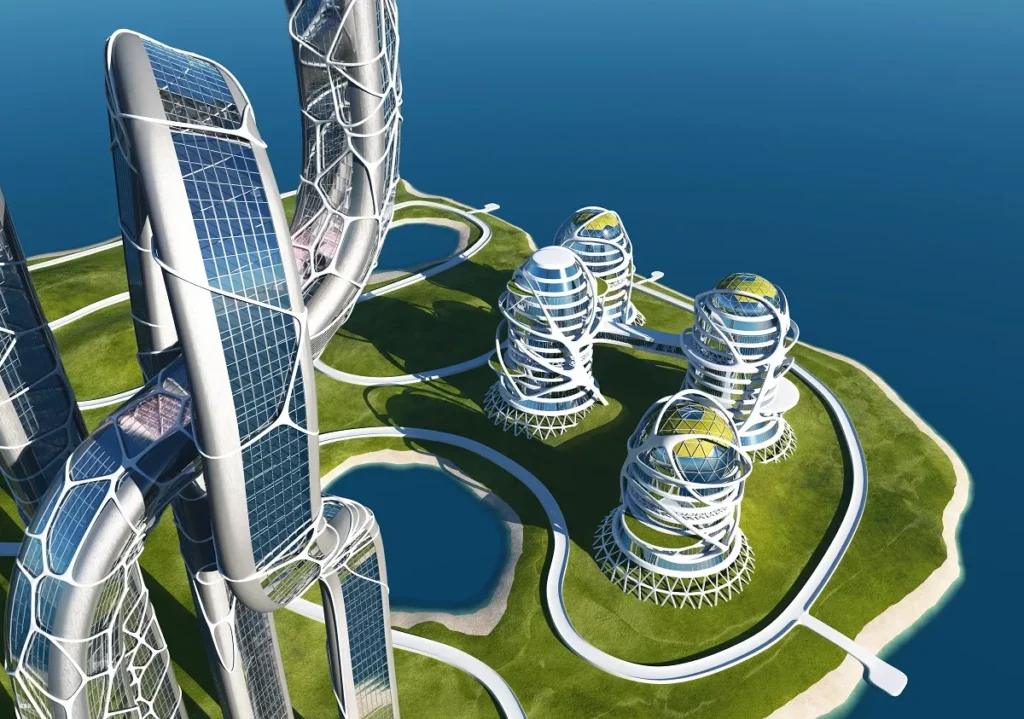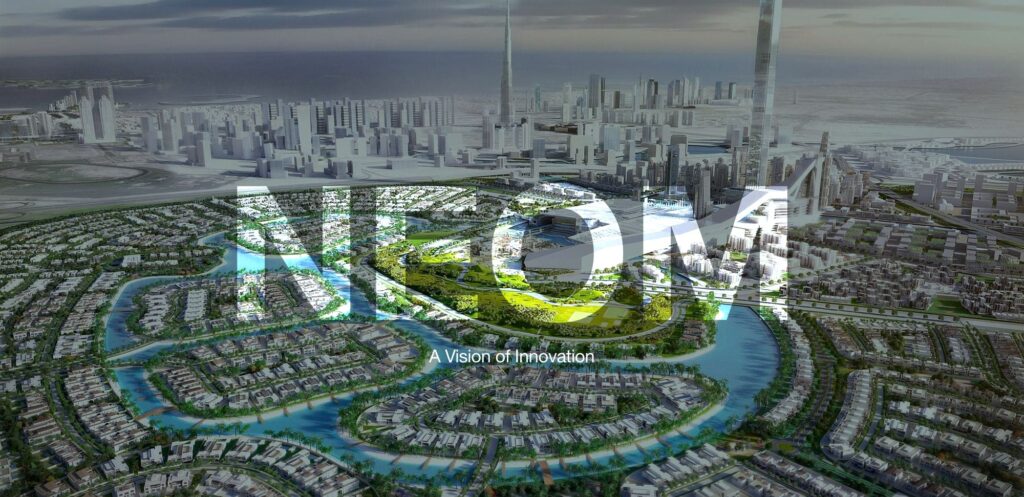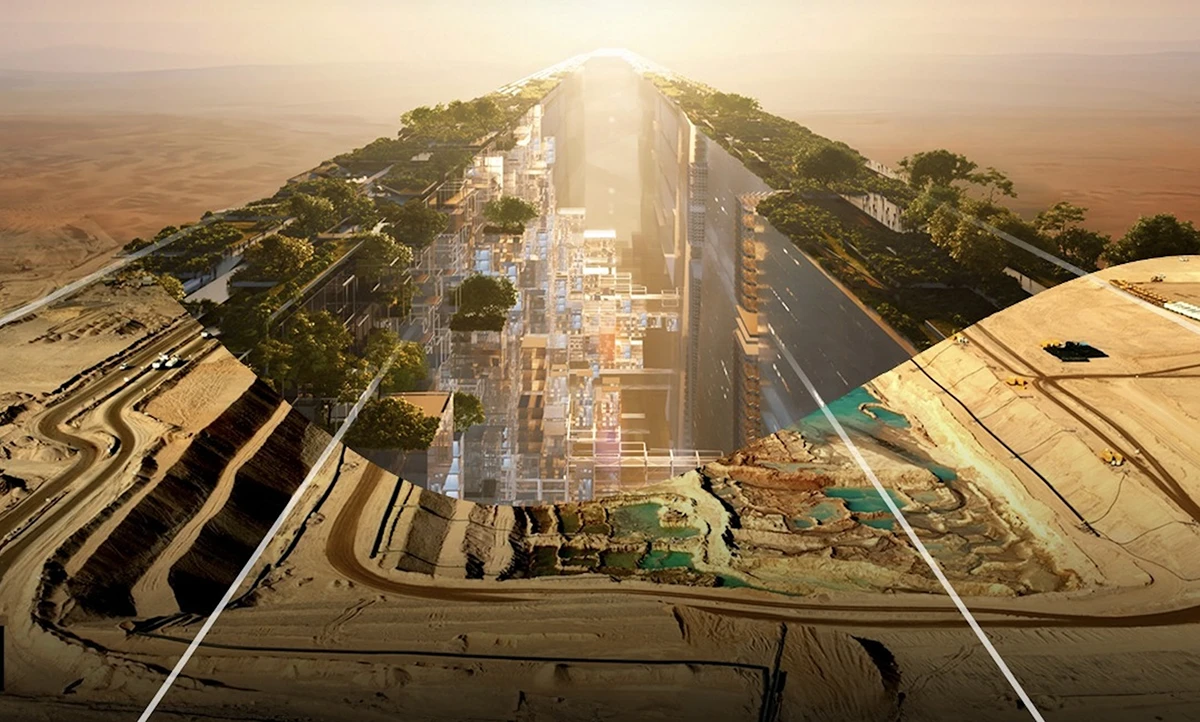Saudi Arabia’s NEOM sustainability project is setting a global benchmark for eco-friendly urban development. Envisioned as a futuristic city powered entirely by renewable energy, NEOM combines technology, environmental responsibility, and innovative urban planning to create a model for sustainable living.
The project reflects Saudi Arabia’s broader Vision 2030 initiative, aiming to diversify the economy, reduce dependence on oil, and embrace a sustainable, technology-driven future. NEOM is not just a city—it is a blueprint for a new way of life, where environmental responsibility, smart technology, and quality of life coexist in harmony.
What Makes NEOM a Sustainability Pioneer?
The NEOM sustainability project is unique because it places environmental considerations at the forefront of urban planning. Unlike traditional cities that often prioritize economic growth over ecological impact, NEOM is designed to coexist with nature.
Key sustainability features include:
- 100% Renewable Energy: NEOM is designed to run entirely on renewable sources, including solar, wind, and hydrogen energy. The city aims to eliminate reliance on fossil fuels, reducing carbon emissions significantly.
- Zero-Carbon Transportation: NEOM plans to introduce autonomous electric vehicles and high-speed transport systems, reducing traffic congestion and air pollution.
- Green Urban Planning: The city incorporates green spaces, vertical gardens, and sustainable architecture to reduce heat islands and promote biodiversity.
- Water Conservation: Advanced desalination and recycling technologies will ensure that water consumption is sustainable, addressing one of the most critical challenges in arid regions.
By integrating these principles, NEOM represents a new generation of urban development focused on environmental stewardship and long-term sustainability.
Innovative Technology Driving Sustainability
Technology is at the heart of NEOM’s sustainability vision. The city plans to use artificial intelligence (AI), the Internet of Things (IoT), and smart grids to manage resources efficiently. These technologies will help monitor energy consumption, optimize waste management, and ensure water and electricity usage is minimized.

Some technological innovations include:
- Smart Energy Grids: These systems manage electricity supply from renewable sources, ensuring energy efficiency and minimizing waste.
- AI-Powered Traffic Management: Autonomous vehicles and AI traffic systems reduce congestion, emissions, and accidents.
- IoT for Waste Reduction: Sensors and data-driven platforms monitor waste generation and recycling rates to ensure minimal environmental impact.
By leveraging cutting-edge technology, NEOM aims to become a zero-emission, sustainable city of the future.
NEOM’s Role in Saudi Arabia’s Vision 2030
The NEOM sustainability project aligns perfectly with Saudi Arabia’s Vision 2030, a strategic plan aimed at diversifying the nation’s economy and reducing its dependence on oil. Sustainability is a central theme in this vision, with NEOM serving as a high-profile example of how the country can lead in renewable energy, green technologies, and innovative urban planning.
NEOM’s development also has economic and social dimensions:
- Economic Diversification: By attracting global talent, businesses, and investors, NEOM will help Saudi Arabia transition to a knowledge-based economy.
- Job Creation: The city is expected to create tens of thousands of jobs in renewable energy, technology, and sustainability-related fields.
- Global Leadership: NEOM positions Saudi Arabia as a leader in sustainable development, showcasing how desert regions can thrive with innovative planning.
NEOM as a Model for Future Cities
NEOM is more than just a sustainable city—it is a testbed for the cities of tomorrow. Urban planners, engineers, and environmentalists worldwide are closely observing its development. NEOM’s approach demonstrates that sustainability and modern living can coexist, offering lessons for cities across the globe.
Key lessons from NEOM include:
- Integration with Nature: NEOM’s architecture and infrastructure respect the natural environment, proving that urban growth doesn’t have to come at the expense of ecosystems.
- Renewable Energy Transition: The city highlights the feasibility of relying solely on renewable energy even for large urban populations.
- Smart Governance: NEOM leverages AI and digital technologies to enhance efficiency, safety, and sustainability in city management.
By showcasing these elements, NEOM encourages other nations to rethink urban development with sustainability at the core.
Challenges and Criticisms

Despite its ambitious vision, NEOM faces significant challenges. Building a city from scratch in a desert environment comes with logistical, financial, and environmental hurdles. Critics point out:
- High Costs: The estimated $500 billion investment raises questions about economic feasibility and long-term returns.
- Environmental Impact: Construction and large-scale infrastructure could initially disrupt local ecosystems.
- Social Integration: Attracting global talent and ensuring cultural harmony in a futuristic city requires careful planning.
However, the NEOM sustainability project team emphasizes that these challenges are part of pioneering a new model for cities worldwide. By adopting advanced technology and eco-friendly practices, NEOM aims to overcome these obstacles.
Global Collaboration and Investment
NEOM is not a purely domestic effort. The project attracts global expertise and investment, making it a collaborative hub for innovation. International partnerships in renewable energy, smart technology, and sustainable construction strengthen NEOM’s vision.
Some examples of collaboration include:
- Renewable Energy Companies: Global leaders in solar, wind, and hydrogen energy contribute technology and infrastructure expertise.
- Tech Innovators: AI, robotics, and smart city companies are working to implement cutting-edge solutions.
- Environmental Organizations: NEOM collaborates with environmental experts to minimize ecological disruption and enhance biodiversity.
Through these collaborations, NEOM positions itself as a global model for sustainable urban development.
The Future of NEOM
The NEOM sustainability project is an ongoing endeavor with phased developments. By 2030, the city plans to have significant portions operational, including renewable energy infrastructure, residential zones, and transport systems.
The city’s long-term vision includes:
- Fully Integrated Smart City: Every building, transport system, and service connected via smart technology.
- Cultural and Recreational Spaces: Green parks, cultural hubs, and entertainment facilities designed to enhance quality of life.
- Economic and Educational Centers: Innovation hubs, universities, and research centers focused on sustainability and technology.
By combining environmental stewardship, economic innovation, and social well-being, NEOM is setting a precedent for future cities around the world.
Conclusion
The NEOM sustainability project exemplifies Saudi Arabia’s commitment to a greener, smarter, and more sustainable future. By leveraging renewable energy, innovative technology, and environmentally conscious urban planning, NEOM is more than a city—it is a vision for a new way of life.
As countries worldwide face environmental challenges and urbanization pressures, NEOM offers a blueprint for how future cities can thrive while respecting the planet. Saudi Arabia’s ambitious project demonstrates that sustainability, innovation, and human development can coexist, inspiring the global community to rethink the future of urban living.
The NEOM sustainability project is not only a milestone for Saudi Arabia but a symbol of hope and possibility for sustainable development across the globe.
Do Follow Gulf Magazine on Instagram
Also read: Saudi Arabia’s Vision 2030: A Bold Plan for the Future



